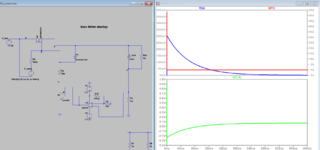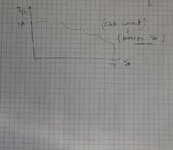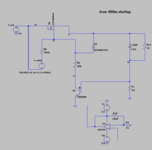parth22
Member level 4
HI all,
I have this below mentioned circuit. Here I would like to charge the capacitor but in steps. And these steps will be based on the Vds of MOSFET.(it can be seen in the second image).
I have a shunt resistor (R1) either 1mohm or 2 mohm. So to turn on the NPN, I need atleast 700mV so using a amplifier circuit. (one can modify it or change it).
Maximum current flow is 1 to 6A.
can anyone tell why I am getting so high peak current or how can I adjust this circuitry.
I have this below mentioned circuit. Here I would like to charge the capacitor but in steps. And these steps will be based on the Vds of MOSFET.(it can be seen in the second image).
I have a shunt resistor (R1) either 1mohm or 2 mohm. So to turn on the NPN, I need atleast 700mV so using a amplifier circuit. (one can modify it or change it).
Maximum current flow is 1 to 6A.
can anyone tell why I am getting so high peak current or how can I adjust this circuitry.


